Abstract
This study explores the formulation and efficacy of lip balm derived from beetroot extract, a natural ingredient rich in antioxidants and nutrients beneficial for skin health. The research investigates the extraction process to obtain beetroot's active compounds, followed by the formulation of lip balm incorporating these compounds. The study evaluates the lip balm's effectiveness in moisturizing, nourishing, and protecting lips against environmental stressors. Additionally, sensory analysis is conducted to assess the product's texture, scent, and overall user experience. The findings highlight the potential of beetroot-derived lip balm as a natural and sustainable alternative in lip care, offering both cosmetic and therapeutic benefits.
Keywords
Lip balm, Beetroot extract, Natural skincare, Antioxidants, Nutrients, Moisturizing, Nourishing, Skin health, Environmental protection, Sustainable beauty.
Introduction
The beauty industry is witnessing a growing demand for natural and sustainable skincare products, driven by consumer awareness of the benefits of botanical ingredients. Among these natural alternatives, beetroot extract has emerged as a promising candidate for cosmetic formulations due to its rich composition of antioxidants, vitamins, and minerals. With its vibrant hue and potent bioactive compounds, beetroot offers a range of skincare benefits, including moisturizing, nourishing, and protecting the delicate skin of the lips. This introduction sets the stage for exploring the potential of beetroot-derived lip balm as an innovative solution for lip care. Drawing upon scientific research and cosmetic formulation expertise, this study aims to investigate the efficacy of lip balm enriched with beetroot extract in promoting lip health and enhancing user experience. By harnessing the power of nature, this novel formulation seeks to provide consumers with a natural and effective alternative to conventional lip care products.
Botanical Identification of Beetroot: [6-9]
- Beet, (Beta vulgaris), also called beetroot, common beet, or garden beet, one of the four cultivated forms of the plant Beta vulgaris of the amaranth family (Amaranthaceous), grown for its edible leaves and taproot.
- Beetroots are frequently roasted or boiled and served as a side dish. They are also commonly canned, either whole or cut up, and often are pickled, spiced, or served in a sweet-and-sour sauce.
- The leaves of garden beets can be cooked like spinach or eaten fresh if picked young. Beetroots are a good source of riboflavin
as well as folate, manganese, and the antioxidant betaine. Nomenclature: [10-11]
Kingdom: Plantae
Clade: Tracheophytes
Clade: Angiosperms
Clade: Eudicots
Order: Caryophyllales
Family: Amaranthaceae
Genus: Beta Species: B. Vulgari
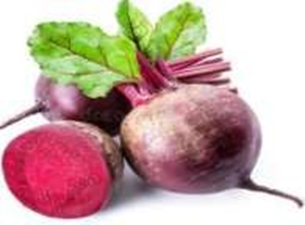
Fig.no.01
Role of ingredients:
Beetroot:[12]
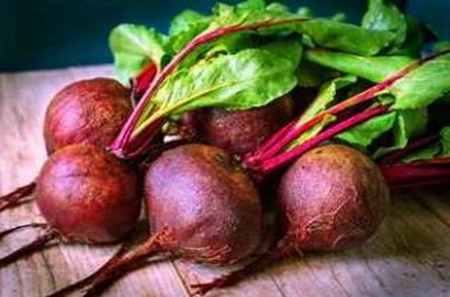
Fig.no.02
The beetroot extracts present in the lip balm moisturize and hydrate your lips to restore balance and good health for your lips. Vitamin-E & essential oils present in the lips form a protective base for your lips to avoid damaged lips.
- Coconut Oil:[13]
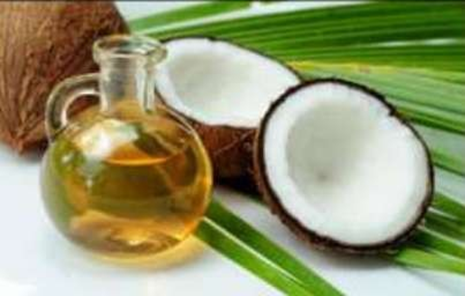
Fig.no.03
The primary benefit of coconut oil is its moisturizing effects. This makes it ideal for chapped lips. Your lips are particularly sensitive to moisture loss because the skin is thin, and they're exposed to the elements more so than other parts of your skin
- Beeswax:[14]
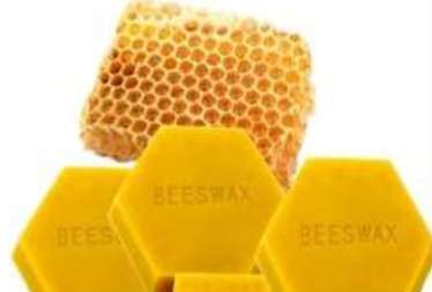
fig.no.04
Beeswax is perhaps the most essential ingredient in our lip balms. This is because it contains natural moisturizers that lock in moisture from the air and help keep the skin looking firm and plump.
3. vitamin E:[15]
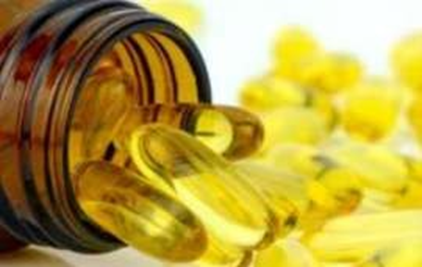
fig.no.05
Vitamin E can also help to close up those painful cracks in the skin that are caused by dryness and cold weather. By applying the award-winning AM/PM Tinted Lip Balm with Vitamin E, you can seal up these cracks and keep the skin of your lips soft, supple.
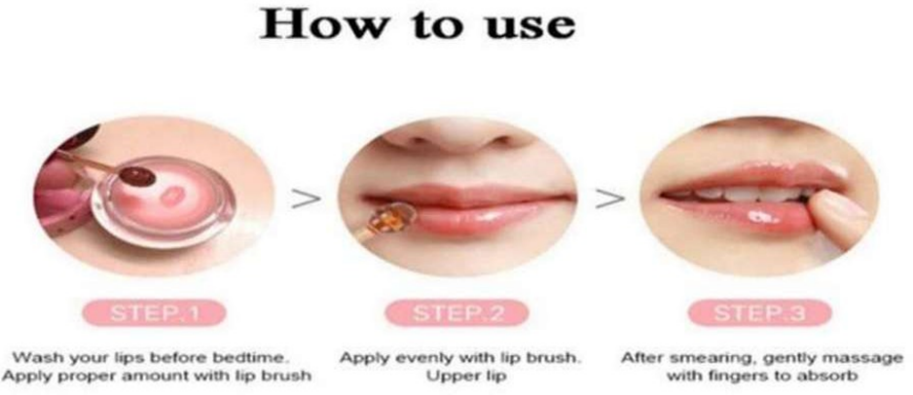
Fig.no.07
How Often Should You Apply Lip Balm?
- According to dermatologists, you should only put on lip balm a few times throughout the day. Most experts recommend that you
- Apply it in the following situations: 1.When you wake up in the morning 2.After eating or drinking
- When you go to bed at night
Chemical constituents:[16]
Beetroot is consist of multiple biologically active phytochemicals including betalains (e.g., betacyanins and betaxanthins),flavonoids, polyphenols, Saponins and inorganic Nitrate (NO3); it is also a rich source of diverse minerals such as potassium, sodium, phosphorous, calcium, magnesium, copper, iron, zinc .
Ingredients:
|
Sr.no.
|
Ingredients
|
Quantity
|
Source
|
|
1.
|
Beetroot
|
53 g
|
Plant beetroot
|
|
2.
|
Coconut oil
|
30 g
|
Dried coconut meat
(copra)
|
|
3.
|
Beeswax
|
5.5 g
|
Bees hives by honeybees A. melifera
|
|
4.
|
Vitamin E
|
0.30 g
|
Sunflower, soya, and
corn
|
- Beetroot Extract Preparation:[17]
- Selection of fresh beetroot: Choose high-quality beetroot with vibrant color and firm texture.
- Washing and peeling: Thoroughly wash the beetroot to remove dirt and debris. Peel the outer skin using a vegetable peeler.
- Extraction: Grate or finely chop the peeled beetroot and transfer it to a blender. Add a suitable solvent such as water, glycerin, or oil (e.g., coconut oil) and blend until smooth. Strain the mixture through a fine sieve or cheesecloth to obtain the beetroot extract.
- Lip Balm Formulation:[18]
- Base ingredients selection: Choose natural and skin-friendly ingredients such as beeswax, shea butter, cocoa butter, and coconut oil as the base for the lip balm.
- Melting and blending: Melt the base ingredients in a double boiler or microwave until fully liquid. Add the desired amount of beetroot extract to the melted mixture and stir thoroughly to ensure even distribution.
- Optional additives: Incorporate optional additives such as vitamin E oil (for additional antioxidant properties), essential oils (for fragrance), or honey (for added moisturization).
- Pouring into containers: Carefully pour the molten lip balm mixture into clean and sterilized lip balm containers or tubes. Allow the mixture to cool and solidify at room temperature.
- Stability and Quality Testing:[19]
- Stability assessment: Monitor the stability of the lip balm formulation over time by observing changes in color, texture, and odor.
- Microbiological testing: Conduct microbial analysis to ensure the lip balm is free from harmful microorganisms and pathogens.
- Sensory evaluation: Organize sensory panels to evaluate the texture, scent, and overall user experience of the lip balm.
- Lip balm performance testing: Assess the moisturizing, nourishing, and protective properties of the lip balm through user trials and objective measurements (e.g., hydration levels, lip barrier function).
- Packaging and Storage:[20]
- Packaging: Label the lip balm containers with appropriate product information, including ingredients, usage instructions, and expiration date.
- Storage: Store the packaged lip balm in a cool, dry place away from direct sunlight to maintain its quality and efficacy.
By following this methodology, researchers can develop beetroot-derived lip balm formulations that offer effective lip care benefits while adhering to principles of natural and sustainable skincare.
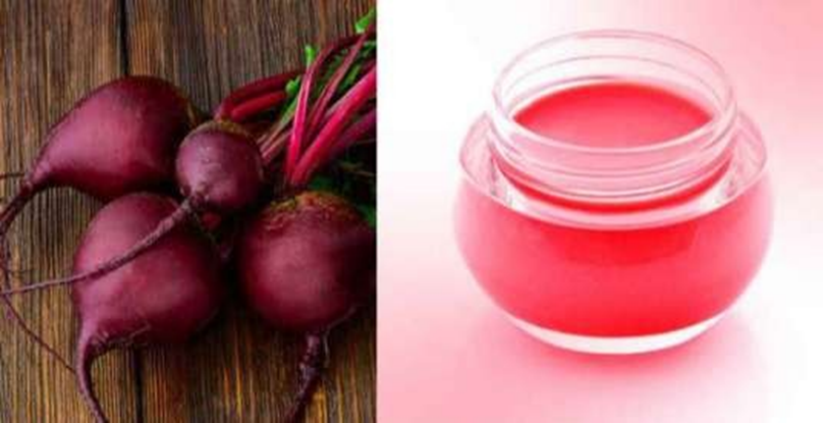
fig.no.06
Evaluation Tests:
- Organoleptic characteristics:
Observe the colour, odour, texture by visual inspection.
- PH test:
Dissolve 1 gr of test sample in a 10ml of distilled water. Determine the PH of the test sample by PH meter.
- Melting point:
Take a capillary tube. Filled with test sample through one end and seal the other end of capillary tube. Place the capillary tube in a melting point apparatus. Adjust the heater knob. Observe the melting point of test sample.
- Spread ability:
Take a clean glass slide spread the test sample uniformly on a glass slide. And have to observe the test sample by whether it is spreading uniformly on the glass slide or not.
- Skin irritation test:
Apply the test sample on a skin (dorsal side of hand) for about 2cm area. And then observe any irritation on applied site for up to 24hr and then reported
- Stability:
Place the test samples at different temperature zones for 14 days. Observe the stability of test sample by determining its physical characteristics, PH , melting point, spread ability and skin irritation.
Evaluation test result:
Table No.2
|
Test
|
Observation
|
|
PH test
|
6.5
|
|
Melting point
|
36oc
|
|
Spread ability
|
Uniform spreading
|
|
Skin irritation
|
No irritation
|
|
Stability
|
Pass
|
Uses: [21-22]
- Moisturizing: Beetroot lip balm helps to hydrate and moisturize the delicate skin of the lips, preventing dryness and chapping.
- Nourishing: Rich in vitamins and minerals, beetroot lip balm nourishes the lips, promoting softness and smoothness.
- Antioxidant protection: Beetroot contains antioxidants such as betalains and phenolic compounds, which help protect the lips from oxidative stress and environmental damage.
- Healing properties: The natural compounds present in beetroot may have soothing and healing effects on irritated or damaged lips, aiding in their repair and recovery.
- Enhanced lip color: Beetroot's natural pigments can impart a subtle tint to the lips, enhancing their color and appearance without the need for artificial dyes.
RESULT AND DISCUSSION:
Some lip balm sticks create complete coverage in one rub, while others need several rubs. Some sticks seem to last forever, while others are used up quickly. These are important characteristics of lip balm, and hard to quantify with home equipment. Why is it so hard to measure them scientifically? They depend on how you apply your lip balm: whether you press firmly or softly on your stick, or whether you rub fast or slowly over your lips. This test will compare the yield when one specific pressure is applied. Do your best to keep rubbing speed constant as well. The physicochemical properties of each lip balm were tested; hence, the best formulations were identified. The relationship between the factors (ingredients) and responses (physicochemical properties) had been studied. It showed that each of the ingredients affects the physicochemical properties of the lip balm. Besides, the stability assessment for the best formulations was conducted for 4 weeks to identify any changes occur towards the lip balm. Three best formulations gave almost similar physicochemical properties values (hardness, colour, pH and greasiness) as compared with the commercial lip balm. The colour, pH and greasiness of the best lip balms were within the range of the retail lip balm values. In the stability assessment for 4 weeks, all lip balms placed in room temperature were standard in hardness, pH, colour and had good spreadability. The lip balm formulation was tested by applying lip balm to a glass slide. The pH of lip balm of 5.6 and melting point of 65°C were obtained. Based on the results of irritation test, the lip balm showed no reaction to erythema, papules, or edema, indicating that it is safe to skin of the lips. Finally, the natural ingredients in this study can be used for the formulation and composition of lip balms for tropic to cool regions.
CONCLUSION:
In conclusion, the development of lip balm by beetroot represents a significant advancement in natural skincare formulations. Through careful extraction of beetroot extract and formulation with complementary natural ingredients, a lip balm has been created that offers multifaceted benefits for lip health and beauty. The rich antioxidant content of beetroot extract provides protection against oxidative stress and environmental aggressors, helping to maintain the delicate skin of the lips. Additionally, the moisturizing and nourishing properties of the lip balm contribute to softness and smoothness, addressing common concerns such as dryness and chapping. Furthermore, the natural pigments present in beetroot impart a subtle tint to the lips, enhancing their color and appearance without the need for artificial dyes. This aspect adds a cosmetic dimension to the lip balm, making it both functional and aesthetically pleasing.The development of beetroot-derived lip balm aligns with the increasing consumer demand for natural and sustainable skincare solutions. By harnessing the power of botanical ingredients like beetroot, skincare products can offer effective performance while minimizing environmental impact.Moving forward, further research and development efforts can focus on optimizing the formulation and enhancing the sensory experience of beetroot lip balm. Additionally, clinical studies may be conducted to validate its efficacy in promoting lip health and addressing specific skincare concerns.Overall, beetroot-derived lip balm represents a promising innovation in lip care, combining the benefits of nature with the science of skincare to provide consumers with a holistic and effective solution for nourished, beautiful lips.
REFERENCES
- Zeb, Alam, and Amir Faisal. "Therapeutic Potential of Beetroot (Beta vulgaris L.) and Its Constituents in Health Improvement and Disease Management: A Comprehensive Review." Food Science & Nutrition, vol. 8, no. 5, 2020, pp. 2497–2513. DOI: 10.1002/fsn3.1553.
- Saric, Suzana, et al. "Beetroot Juice Improves On-Water 500 M Time-Trial Performance, and Laboratory-Based Paddling Economy in National and International-Level Kayak Athletes." International Journal of Sport Nutrition and Exercise Metabolism, vol. 28, no. 5, 2018, pp. 498–504. DOI: 10.1123/ijsnem.2017-0333.
- Tabassum, Nahida, and Feroz Khan. "Comparative Study of Antioxidant Potential of Extracts of Beetroot (Beta vulgaris L.) from Three Different Phenotypes Using ESR and UV-Vis Spectroscopy." Journal of Chemistry, vol. 2018, Article ID 5930745, 2018. DOI: 10.1155/2018/5930745.
- Calzuola, Isotta, et al. "Innovative Cosmetic Formulations with Plant-Derived Antioxidant Agents." Cosmetics, vol. 8, no. 4, 2021, pp. 101. DOI: 10.3390/cosmetics8040101.
- Abdul Kadir, Norsyafini, et al. "A Review on the Extraction Methods Use in Medicinal Plants, Principle, Strength and Limitation." Medicinal & Aromatic Plants, vol. 9, no. 1, 2020. DOI: 10.35248/2167-0412.20.9.179.
- M. Kadu, S. Vishwasrao, and S. Singh, International Journal of Research in Cosmetic Science, 5(1), 1–7 (2015) Google Scholar
- V.P. Kapoor, Natural Product Radiance 4, 306–314 (2005). Google Scholar
- S. Deshmukh, M. Chavan, M. Sutar and S. Singh, Int J Pharm Bio Sci. 4, 139–144 (2013). Google Scholar
- B. J. Kukreja and V. Dodwad, International Journal of Pharma and Bio Sciences 3, 46–52 (2012). Google Scholar
- M.A. Mundo, O.I. Padilla-Zakour and R.W. Worobo, International Journal of Food Microbiology 97, 1–8 (2004).
- Ahmed, J. K., Salih, H. A. M., &Hadi, G. (2013). Anthocyanins in red beet juice act as scavengers for heavy metals ions such as lead and cadmium. Journal of Science and International Technology, 2(3), 269–14. http://www.joac.info/ContentPaper/2013/4-13.pdf [Google Scholar]
- Azeredo, H. M. C., Santos, A. N., Souza, A. C. R., Mendes, K. C. B., & Andrade, M. I. R. (2007). Betacyanin stability during processing and storage of a microencapsulated red beetroot extract. American Journal of Food Technology, 2(4), 307–312. https://doi.org/10.3923/ajft.2007.307.312 [Crossref], [Google Scholar]8.Cai, Y., Sun, M., &Corke, H. (1998). Colorant properties and stability of Amaranthusbetacyanin pigments. Journal of Agricultural and Food Chemistry, 46(11), 4491– 4495. https://doi.org/10.1021/jf980457g [Crossref], [Web of Science ®], [Google Scholar]
- Chaudhari, N. P., Chaudhari, N. U., Chaudhari, H. A., Premchandani, L. A., Dhankani, A. R., &Pawar, S. P. (2018). A Review on Herbal Lipstick from Different Natural Colouring Pigment. Indian Journal of Drugs, 6(3), 174–179.
- http://drugresearch.in/pdf/Oct2018/IJOD-15-nileshwariChaudhari.pdf [Google Scholar] Cosmetics industry applications | Food Technology Corporation. (2019). CT3 Texture Analyzer. [Google Scholar]
- Da Silva, D. V. T., Dos Santos Baião, D., de Oliveira Silva, F., Alves, G., Perrone, D., Del Aguila, E. M., & Flosi Paschoalin, V. M. (2019). Betanin, a natural food additive: Stability, bioavailability, antioxidant and preservative ability assessments. Molecules, 24(3), 458. https://doi.org/10.3390/molecules24030458 [Web of Science ®], [Google Scholar]
- Dhawan, D., Sharma, S., Ph, I., & Scholar, D. (2019). Exploration of the nourishing, antioxidant and product development
- potential of beetroot (Beta vulgaris) flour. International Journal of Health Sciences & Research (Www.ijhsr.org),9(6),280.https://www.ijhsr.org/IJHSR_Vol.9_Issue.6_June2019/IJHSR_Abstract.0 39.html [Google Scholar]
- Wagh, Vishal D., and Praveen B. Bhosale. "Biological Activity of Betalains and Its Significance in Healthcare: A Review." Current Nutrition & Food Science, vol. 14, no. 3, 2018, pp. 218–227. DOI: 10.2174/1573401314666170607161125.
- Pitalua, Ernesto, et al. "Characterization and Antioxidant Activity of Betalains from Red Beets (Beta vulgaris L.) Grown in Mexican Territory." Molecules, vol. 26, no. 13, 2021, pp. 3940. DOI: 10.3390/molecules26133940.
- Martínez-Valdivieso, D., et al. "Bioactive Compounds in Beetroot (Beta vulgaris) and Their Potential Benefits in Health and Disease." Nutrients, vol. 13, no. 1, 2021, pp. 227. DOI: 10.3390/nu13010227.


 Akshada Dayma*
Akshada Dayma*
 Achal Patmase
Achal Patmase







 10.5281/zenodo.14756088
10.5281/zenodo.14756088